
Measure Customer Engagement In SaaS: Methods And Metrics
Get The Insights!
The fastest way to learn about Product Growth, Management & Trends.
What is customer engagement?
Customer engagement refers to the repetitive interactions customers have with a product or service throughout their user journey. It is measured by the frequency and number of engagement touchpoints.
Engaging customers with various product features increases the likelihood of them becoming advocates, leading to longer retention and higher lifetime value (LTV).
Highly engaged users are more profitable, and understanding how your product creates value is crucial to boosting engagement and making the product indispensable to users.
Why should you measure customer engagement for SaaS?
In general, measuring engagement gives you a lot of insights into three key areas: retention or churn, account expansion, and product advocacy.
- Measuring user engagement tells you how many users perform meaningful actions in your product and are on the right path to activation. Tracking engagement can tell you if your customer engagement strategies are working or not.
- Engagement metrics provide insights into specific user actions that might indicate their changing needs within your product and inform your customer engagement strategy. Users with changing needs are great candidates for account expansion.
- Customer engagement metrics provide insight into happy users that are more likely to become your product advocates. These users are in the later stages of the user journey and have experienced value with your product over and over again. They are likely to give you valuable feedback and even write reviews advocating for your product.
How do you measure engagement?
You can measure engagement using the following four ways:
- by month, week, or day: Know if your product is successfully creating loyal users over time.
- by channel: Find the acquisition channels that bring in your most profitable customers.
- by feature usage: Identify invaluable features for your users to guide product development efforts.
- by customer health score: Predicts the likelihood of getting a selected outcome from a customer based on engagement.
Let us discuss each of these ways in further detail below:
1. Measure engagement by month, week, or day
You can measure user engagement against set periods of time.
For example, how many loyal users your product is creating over a day, week, or month. These can be categorized as follows:
- Daily active users (DAU): This refers to the number of users that log in to use your product every day.
- Weekly active users (WAU): This is the number of users that use your product every week.
- Monthly active users (MAU): The number of users that use a tool every month.
Which one of the three above should you use to track engagement? It depends on how you expect people to use your app.
In relation to each other, the DAU, WAU, and MAU provide a percentage metric to measure the proportion of users engaged in your app over specific periods of time. For instance, the DAU:MAU ratio is also referred to as the stickiness ratio. It helps you understand the value of your product by measuring how often users return to your app.
2. Measure engagement by channel
Most companies acquire users through more than one channel. Without measuring engagement by channel, it is hard to tell which channel brings you the most profitable users with the lowest CAC too.
Let’s say you are acquiring users through the following channels:
- Organic leads
- Lead nurturing
- Referrals
- Affiliate
Group each of the acquisition channels above into four different cohorts, measure engagement over time, and do cohort analysis to find your most engaged users.
If you find that users acquired by affiliate marketing are more engaged in your product, hence more profitable, focus your acquisition efforts on this channel to acquire even more users.
This leads to increased customer retention which is key for SaaS companies as shown in the stats below.
High retention lowers your CAC overall because you are no longer spending resources on less productive acquisition channels.
3. Measure engagement by product usage
Measuring engagement over time and by channels gives you an overview of the whole product’s core user actions. However, you also need to understand what users value about your product to inform future development efforts.
This is why measuring which features customers engaged with is important.
Knowing which feature received more engagement over a specific period would help you direct resources to improve that feature further.
Pick out feature usage patterns to understand the reasons behind the high usage of certain features. This insight can provide lessons to improve on the features with low usage.
Userpilot makes feature usage tracking quite easy. Quickly tag features using UI elements without writing any code and automatically track how users engage with them.

Feature tagging on Userpilot helps you track customer engagement on a feature-by-feature basis and identify who your engaged vs disengaged users are. You can then use such product analytics and create in-app experiences to drive more engagement and increase feature usage.
4. Measure engagement using customer engagement metrics
Customer engagement metrics are valuable tools to measure and assess the level of interaction and involvement of customers with a SaaS product or service.
By tracking customer engagement metrics like active users, time spent on the platform, feature adoption rate, frequency of use, and more, businesses can measure the level of customer engagement. This information allows them to make informed decisions to improve the user experience, retain customers, and drive business growth.
Try Userpilot to Track and Improve User Engagement!

Key customer engagement metrics to track
User engagement metrics are the main data points that help you to measure users’ interactions with your product.
Here are the top metrics that are important for SaaS:
Conversion rate
As a customer engagement metric, the conversion rate provides actionable insights into how well your product or service attracts and convinces customers to take the desired action, such as signing up for a trial or subscribing to a paid plan. A higher conversion rate suggests that there are engaged customers who see value in your product and decide to pay for it.
In SaaS, you can track free trial conversion rate by using the formula: (Paying customers from free trials within a given period/ Free trial sign-ups within a given period) * 100.
For example, let’s say your SaaS company had 500 new users sign up for a free trial last month, and 100 of them converted to paying customers at the end of the trial period:
Free Trial Conversion Rate = (100 / 500) * 100 = 20%
In this scenario, the free trial conversion rate is 20%, meaning that 20% of the users who signed up for the free trial eventually became paying customers.
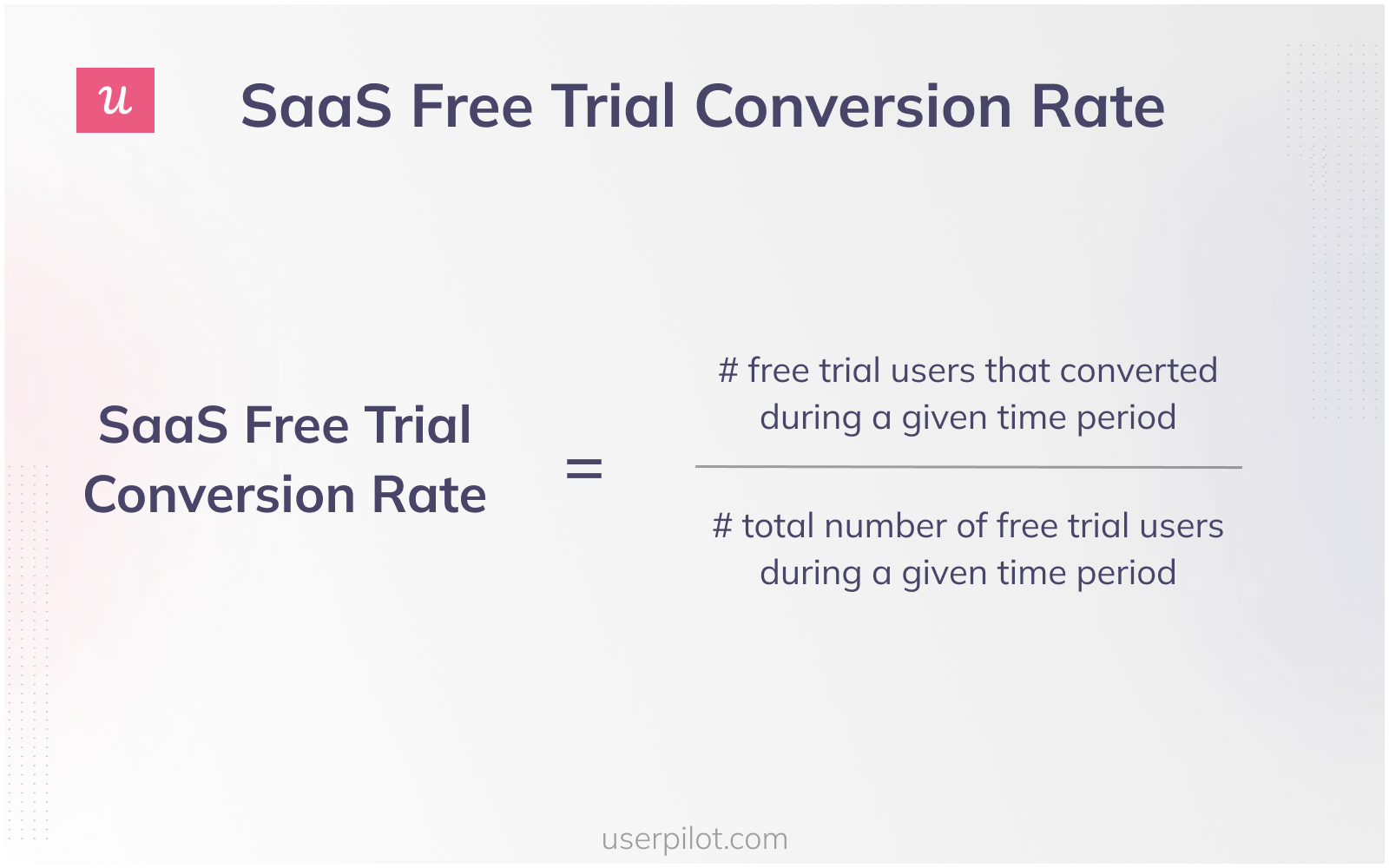
User activation rate
User activation rate is a metric that measures the percentage of new users or customers who have completed a specific activation event or milestone that signifies they are actively engaged with your product or service. This event could be a key action that demonstrates the user’s integration of the product into their workflow or the achievement of a specific benefit from the product.
The formula to calculate the user activation rate is:
User Activation Rate = (Number of users who reached activation milestone / Number of users who signed up) * 100
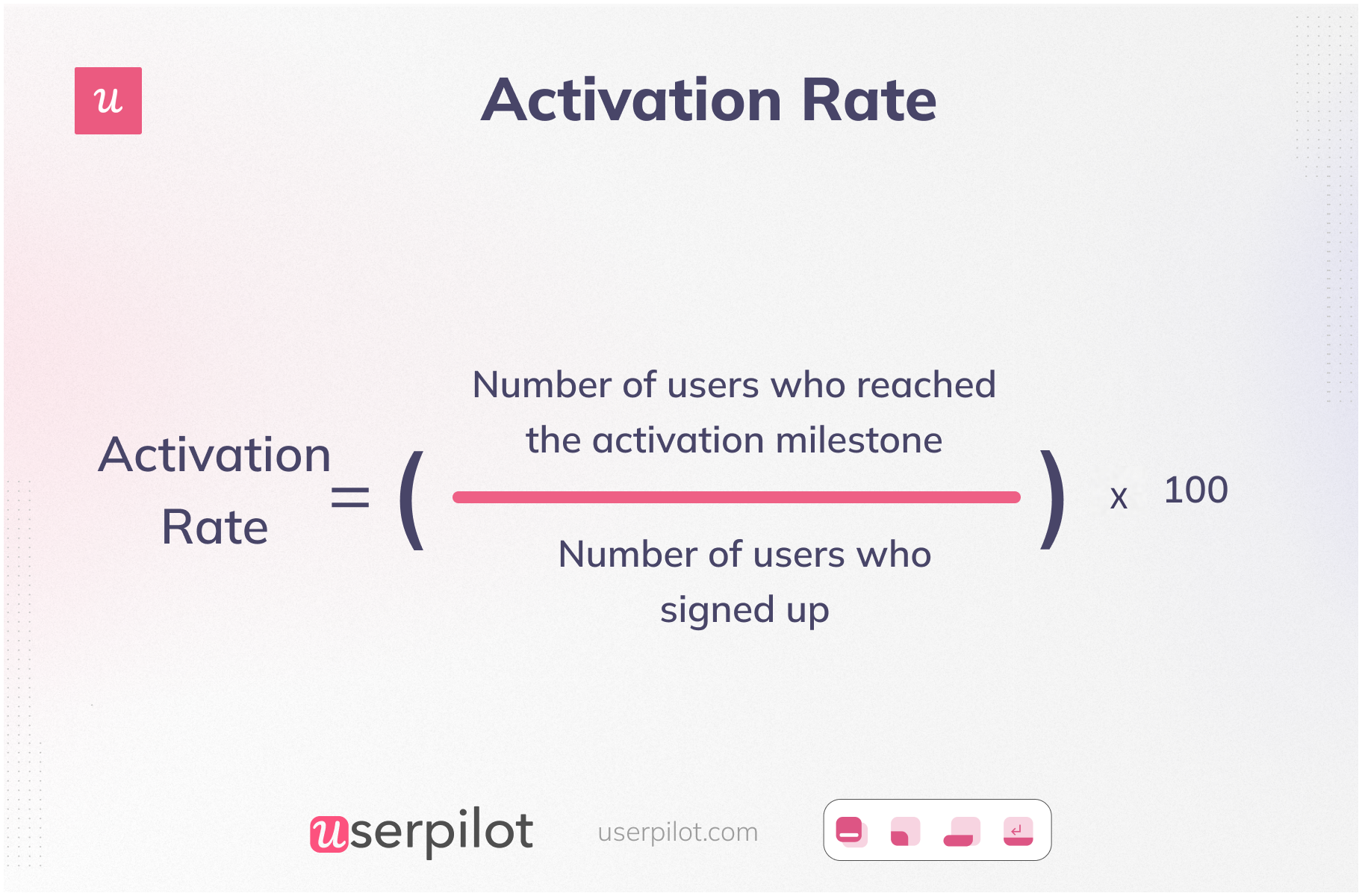
Product adoption rate
Product adoption rate is a metric that measures the percentage of customers or users who have started using a new product or feature within a specific period. It indicates how well customers are embracing and integrating the new offering into their regular usage.
The formula to calculate the product adoption rate is:
Product Adoption Rate = (Number of new active users / Total signups) * 100
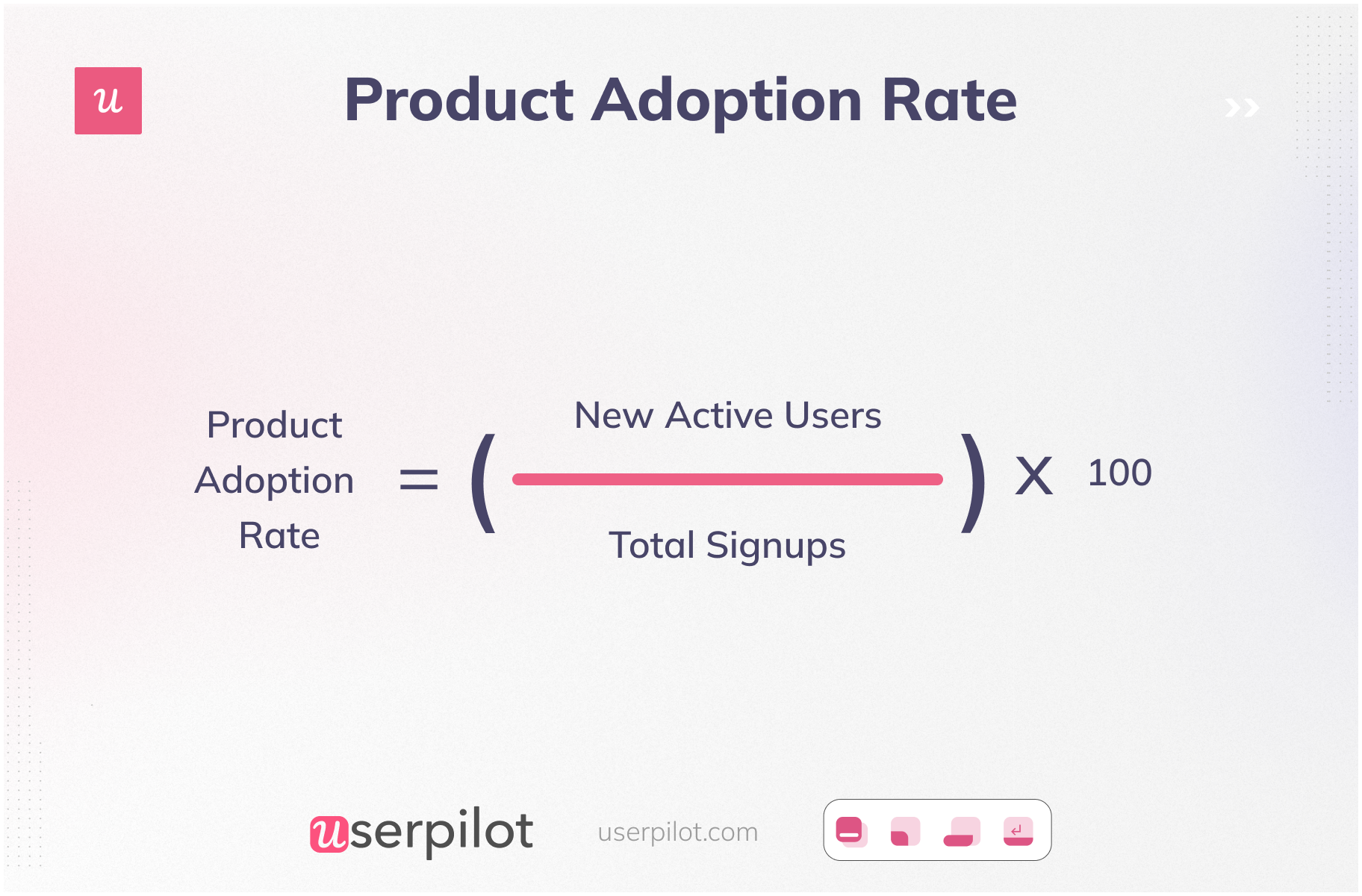
Active users
Active users is one of the crucial customer engagement metrics you can use to measure the level of user activity and interaction with your product or service. It refers to the number of unique users who engage with the product within a specific time frame, such as daily, weekly, or monthly.
Active users provide valuable insights into how well a product is retaining and engaging its customer base. To monitor active users, you can use tools like Google Analytics. But if you want to gain more actionable insights into factors contributing to the increase or decrease of your active users, you can use Userpilot.
For example, you can track which feature is the most favorite or the most frequent event happening inside your product.

Stickiness
Stickiness measures the frequency and consistency of user interactions with the product. A high level of stickiness indicates strong customer engagement and satisfaction, while low stickiness suggests that users are not consistently using the product.
It provides ongoing feedback on the success of your customer engagement strategy. Monitoring changes in stickiness over time helps assess the effectiveness of initiatives and refine the engagement strategy accordingly.
To calculate stickiness, divide your number of daily active users by monthly active users.
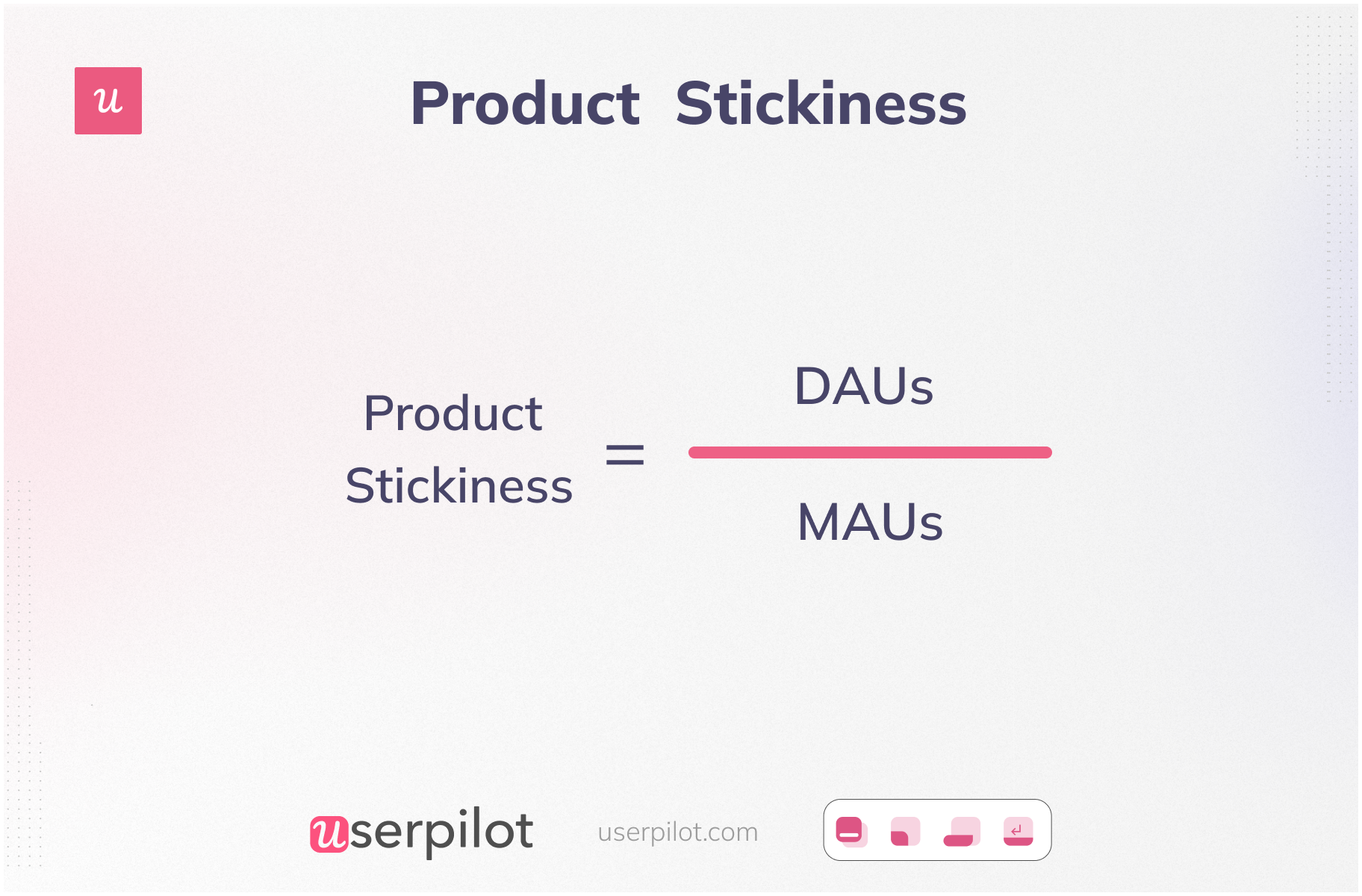
Product engagement score
A product engagement scoreis a composite metric that quantifies how actively users engage with a SaaS product. It combines various engagement indicators, assigning weights to each metric based on importance. The score is calculated by aggregating these metrics, providing a holistic view of user interaction with the product.
For example, if adoption rate, stickiness rate, and growth rate are considered the most critical engagement indicators, they might be given higher weights in the calculation, and the product engagement score would reflect the overall performance across these metrics.
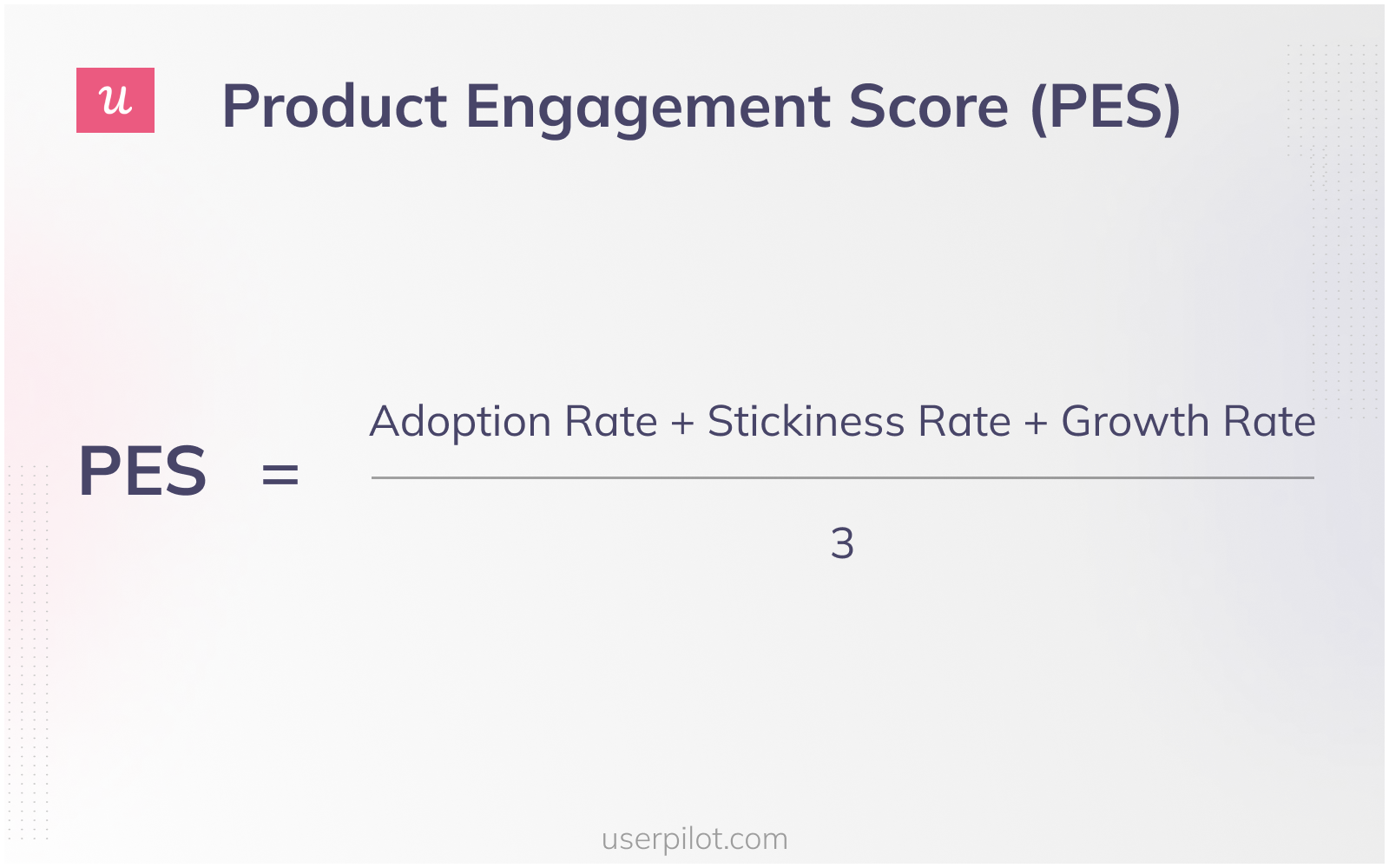
Net promoter score (NPS)
Net Promoter Score (NPS) is a widely used engagement metric that measures customer loyalty and satisfaction with your product or service.
NPS is typically measured through a survey that asks existing customers to rate, on a scale of 0 to 10, how likely they are to recommend the product to friends or colleagues. Based on their responses, customers are segmented into promoters (score 9-10), passives (score 7-8), and detractors (score 0-6).
To calculate NPS, subtract the percentage of detractors from the percentage of promoters:
NPS = % Promoters – % Detractors
NPS can range from -100 (if all respondents are detractors) to +100 (if all respondents are promoters).
Using tools like Userpilot, you can easily get a unified view of your NPS data and analyze responses to learn how you can build loyal customers.

Customer effort score (CES)
Customer Effort Score (CES) measures the ease of the customer’s experience when interacting with a SaaS product or service. While it focuses on customer satisfaction, a positive CES score can contribute to higher customer engagement. When customers find it easy and effortless to use your product or service, they are more likely to engage with it frequently.
You can measure CES by collecting customer feedback via a customer effort score survey.
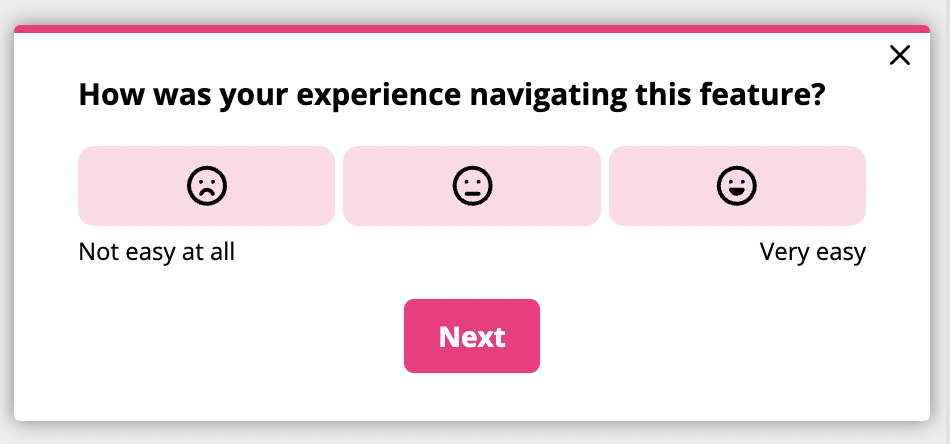
Customer satisfaction score (CSAT)
Customer Satisfaction Score (CSAT) is indeed an important customer engagement metric. It measures the level of customer satisfaction with a specific interaction or experience with your product or service. CSAT surveys typically ask customers to rate their satisfaction on a scale, such as from “very dissatisfied” to “very satisfied.”
CSAT directly reflects how satisfied customers are with their experience, and satisfied customers are more likely to be engaged and loyal.
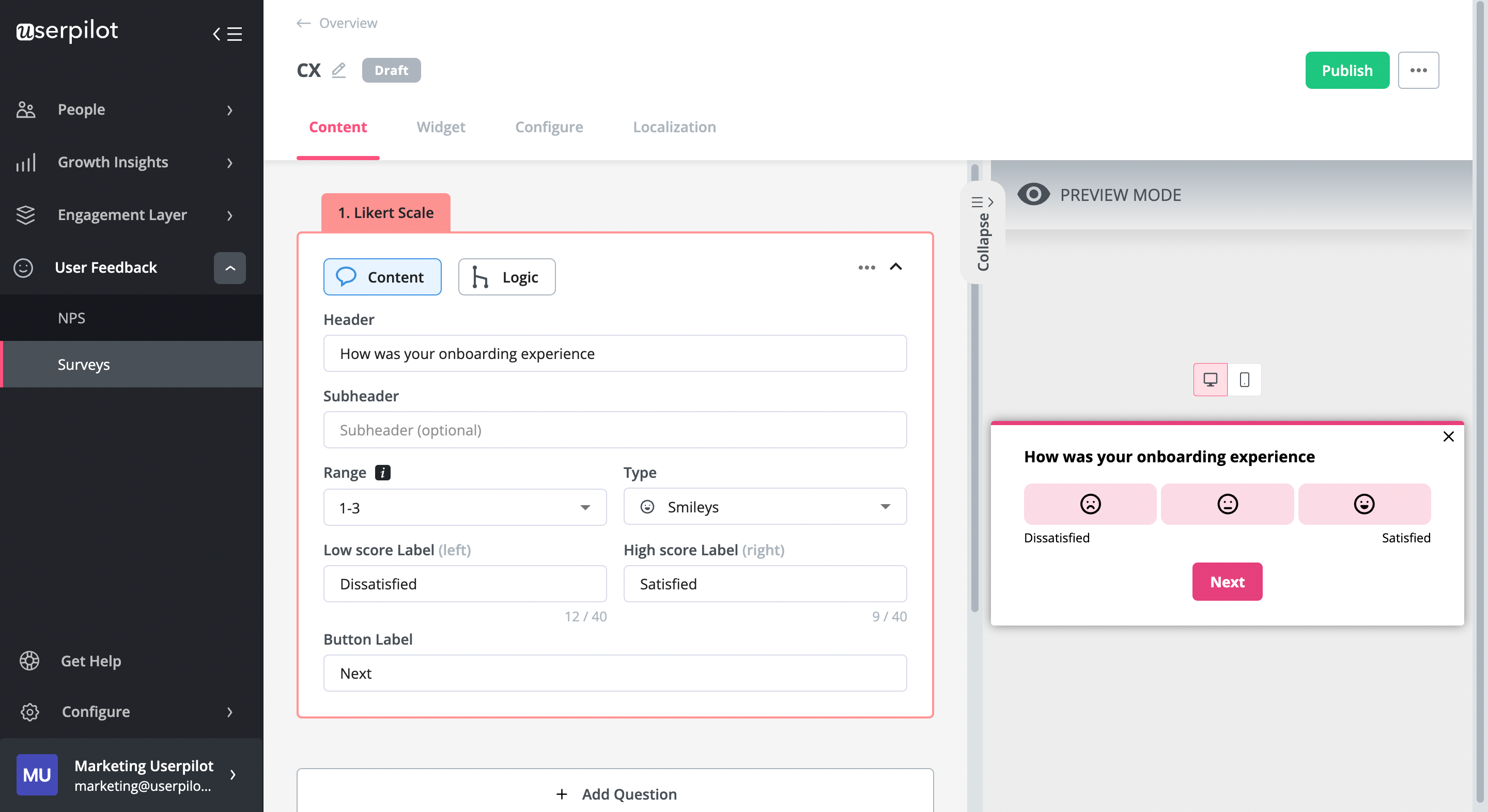
Customer lifetime value
Customer Lifetime Value (CLV) is a valuable engagement metric that assesses the total value a customer brings to the business over the entire duration of their relationship. It is critical for assessing the long-term impact of customer engagement efforts on business performance.
The goal is to ensure that the CLV exceeds the customer acquisition cost, meaning that the value a customer brings during their lifetime is greater than what it cost to acquire them.
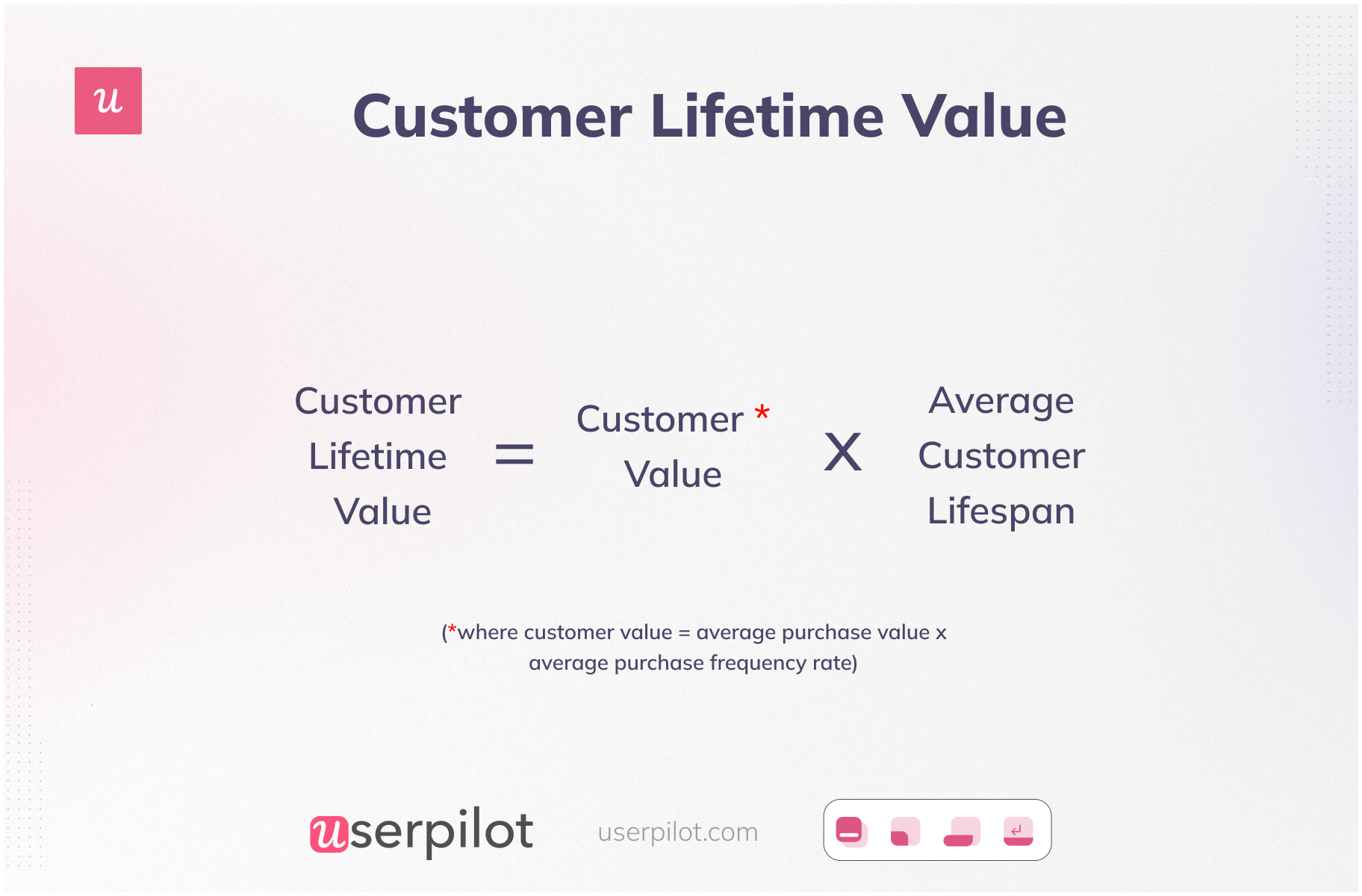
Conclusion
Measuring engagement is crucial to determine how much value users get from your product. You can measure engagement by time period, acquisition channel, feature usage, and customer health score.
Already tracking engagement and want to boost your numbers by engaging with your users in-app? Book a Userpilot demo and get started!
Try Userpilot to Track and Improve User Engagement!







